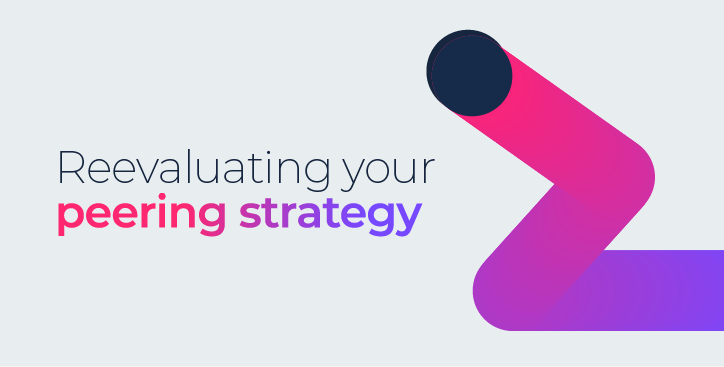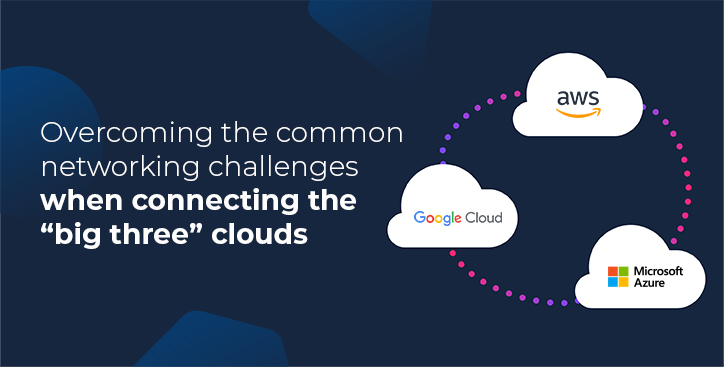Reevaluating Your Peering Strategy
By Alex Hawkes|31 October, 2022

Peering has come a long way since the formation of what was arguably the first settlement-free exchange of internet traffic, the Commercial Internet eXchange in Reston, Virginia, in 1991.
Today there are over 600 IXs around the globe helping to peer thousands of IP networks.
The internet and the technology that underpins it is a very different landscape in 2022 than it was in 1991. In this blog we examine some of the main drivers for peering today and explain why service providers in communications and content are adopting remote peering.
A data driven world
1991 was a landmark year in the history of online data, not only did the technology world see the formation of the first ‘peering’ exchange, it also bore witness to the launch of the first web page created by engineers at the CERN labs.
According to data from Cisco the total volume of traffic online in 1991 was about 2,002 GB/mo. Cisco estimates that figure has risen to 350 PB/mo in 2022 (from fixed and mobile sources). To put that into perspective, a Gigabyte is a billion bytes and a Terabyte is a trillion bytes; a Petabyte is 1,000 Terabytes.
That data is, and has been, growing exponentially is not a sudden development. The world has moved online en-masse.
In the consumer space we have seen the emergence of filing sharing, social networks and user generated content, smartphones and tablets with 3, 4 and now 5G connectivity, streaming services that have transformed the music and movie industries.
According to Cisco, 82% of all new traffic online in 2022 is expected to be video. Earlier this year, the number of internet users globally topped the five billion mark.
The other major development over the course of the past two decades has been the emergence and absolute reliance on cloud-based technology.
From pretty much a standing start at the turn of the century, you would struggle to find an organisation on the planet that does not use the cloud in some form. This migration to a hybrid world of public, private and on-premise cloud is increasingly being used for business critical applications.
According to research from analysts at Gartner, 95% of data workloads will be hosted in the cloud by 2025, up from 30% in 2021.
There is no doubt that the COVID pandemic accelerated the rate of growth in data and cloud adoption globally. Organisations moving their employees and operations online almost over night was a monumental achievement.
It would have been unthinkable, or least nowhere near as rapid or successful, if the pandemic had struck in 2000 or before.
The OECD estimates that some operators have experienced as much as a 60% increase in internet traffic compared to before the crisis. It looks now like hybrid ways of working are here to stay with many office spaces only half full.
Solving the complexity challenge with peering
With every technological development and operational readjustment the world and the networks that support it are becoming more complex. New protocols at the data and control plane levels are added to resolve challenges as they arise or to improve efficiency.
However, the size and complexity of networks means existing technology remains in place and soon becomes an expensive legacy.
Everything needs to be managed and maintained. As engineers continue to build, adding more layers with new protocols, networks become increasingly unsustainable and unscalable.
Handling exponential rises in traffic across ever more complex environments, in the face of increasing competition from around the world, points to a requirement for networks to be redesigned with a focus on simplification and network efficiency. Peering is the obvious solution.
In this recent blog we highlight the top five benefits of peering and note that improving efficiency by harnessing simplicity is at the heart of peering. It is why, all those years ago in Reston, Virginia, the Commercial Internet eXchange was founded, and it is why we have seen such explosive growth in the IX market.
The benefits of remote peering
Remote peering takes things to the next level and removes the need for costly infrastructure at the exchange point.
Console Connect makes life even easier and more flexible enabling remote peering at leading exchanges through automation. Organisations can peer without a physical presence at the local exchange point by using bandwidth to extend a network’s reach to an IX.
Through the Console Connect digital platform, organisations can use Internet Exchange-as-a-Service to access exchange points and remotely peer with top IX partners around the world in real-time and on demand.
To see which IX partners are already available on the platform, click here.

.jpg)





.jpg)

